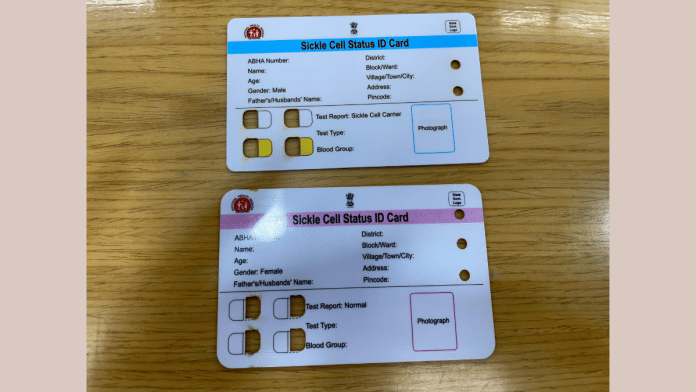New Delhi: All tribals in the country below 40 years will be given identity cards on their sickle cell anemia status. The colour-coded cards can be matched ahead of a marriage in order to assess the risk of sickle cell disease in a child born from the union.
The prototype card is ready and the screening is set to start from Chhattisgarh, Union Health Minister Mansukh Mandaviya said Wednesday.
Sickle cell anaemia is an inherited disease where a person has misshapen haemoglobin that has less ability to carry oxygen. The disease is common among tribals. There are approximately 200 districts in the country where the disease is rampant – mostly in Madhya Pradesh, Gujarat, Rajasthan, Jharkhand and Odisha.
Mandaviya said: “The target is to eliminate the disease by 2047. It is a disease that happens only in tribal areas and since it is genetically transmitted, the screening effort will be on prevention. We will give colour-coded identity cards to all tribals aged less than 40 years. When marriage negotiations happen, the two cards can be matched — much like we match astrological charts now — to assess the risk to any child born of the union. Based on that, a decision can be made on the marriage.”
Extensive counselling will be carried out among these populations to ensure awareness and compliance. Mandaviya said states would be provided funds for the programme under the National Health Mission, and that the Centre would pitch in with 60%.
The screening will be carried out using “point of care” histological tests when a person’s status as sickle cell positive or a carrier will be ascertained by the examination of blood slides. “A person can give blood and immediately a card will be issued defining their status,” Mandaviya said.
Counselling for awareness would be carried out in association with the Ministry of Tribal Affairs.
Elaborating on plans to open government laboratories to the private sector, the health minister said it was essential to ensure that best facilities were available to all.
Also read: Budget 2023: Health allocation puts focus on pharma research, collaborative R&D at ICMR labs






